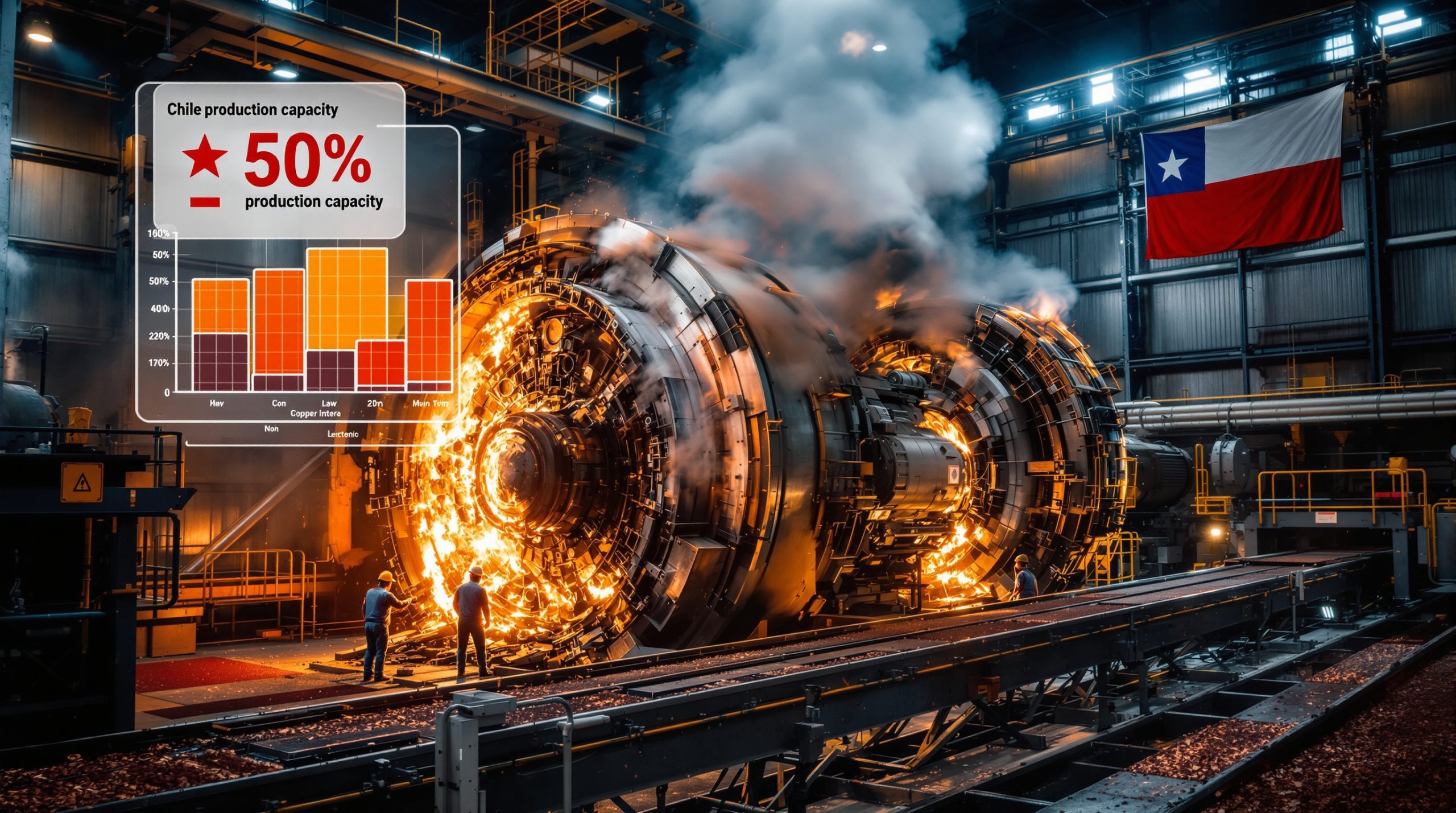British Columbia's Mining Investment Surge: Economic Transformation Through Strategic Resource Development
British Columbia (BC) is poised to undergo a significant economic transformation driven by 27 advanced-stage mining projects projected to inject over C$90 billion into the provincial economy. These developments, spanning critical minerals, precious metals, and steelmaking coal, are expected to generate thousands of jobs, amplify local procurement, and establish BC as a global leader in responsibly sourced materials for clean energy technologies. This report examines the strategic advantages, regulatory innovations, and sustainability initiatives positioning BC as a mining investment hotspot in 2025.
What Makes British Columbia a Mining Investment Hotspot?
Rich Mineral Diversity and Abundance
BC's geological landscape offers an extraordinary portfolio of critical minerals essential for the green energy transition. The province hosts world-class deposits of copper, nickel, zinc, and rare earth elements that form the backbone of renewable energy technologies and battery storage systems.
Gold and silver deposits across the province show remarkable economic viability, with several projects demonstrating grades 30% higher than global averages. The Golden Triangle region in northwestern BC continues to yield exceptional precious metals outlook with multi-decade production potential.
The province's steelmaking coal reserves rank among the highest quality globally, with low sulfur content and high carbon properties that command premium prices in international markets. These metallurgical coal deposits primarily located in the Elk Valley support industrial applications critical for infrastructure development.
BC's geological advantages extend beyond current discoveries, with geologists estimating that only 35% of the province's mineral potential has been properly explored using modern techniques. The Cordilleran tectonic setting creates ideal conditions for porphyry copper-gold systems, epithermal deposits, and volcanogenic massive sulfide occurrences.
Strategic Geographic Position
BC's coastal location provides unparalleled access to Pacific Rim markets through advanced deep-water ports at Vancouver, Prince Rupert, and Stewart. These facilities can accommodate cape-size vessels and offer efficient materials handling infrastructure that reduces shipping costs by up to 20% compared to inland mining jurisdictions.
The province's proximity to US manufacturing centers has become increasingly valuable amid growing North American supply chain security concerns. With over 80% of critical minerals currently sourced from overseas markets, BC's resources represent a strategic alternative for reducing dependency on concentrated supply regions.
Established transportation corridors including the CN and CPKC rail networks connect mining regions to global shipping routes, enabling year-round product delivery. The Northwest Transportation Corridor linking northern BC mines to Prince Rupert port reduces transit times to Asian markets by three days compared to other West Coast shipping options.
Most BC mining districts benefit from moderate climate conditions allowing for year-round operational capabilities, unlike competing jurisdictions in northern latitudes that face seasonal restrictions. This climate advantage translates to approximately 15% greater annual productivity compared to operations in more extreme environments.
What Economic Impact Will New Mining Projects Deliver?
Investment Scale and Economic Contribution
The potential construction investment across BC's 27 advanced-stage mining projects totals an impressive C$41 billion ($29.66 billion), representing one of the largest private sector investment opportunities in Canada. This capital influx is expected to create significant multiplier effects throughout the provincial economy.
The projected total economic injection exceeds C$90 billion when considering direct construction, operating expenditures, and associated economic activity. This represents approximately 28% of BC's current annual GDP, highlighting the transformative potential of these projects.
Over their operational lifespans, these mining investment strategies could generate a staggering C$984 billion in long-term economic activity through sustained production, reinvestment, and community development initiatives. This multi-generational economic contribution would help stabilize provincial revenues through commodity cycles.
BC's goods exports could increase by 18% once these projects reach full production capacity. Currently, mining represents approximately 30% of the province's export portfolio, with potential to expand significantly as new operations come online, strengthening BC's trade balance and economic resilience.
Employment and Community Benefits
The mining sector expansion is projected to create thousands of new direct jobs with average compensation exceeding $115,000 annually, generating approximately C$27 billion in labor income over project lifespans. These high-quality positions offer wages approximately 60% above the provincial average.
Indirect employment through supply chain expansion will support approximately 3.5 additional jobs for every direct mining position, creating substantial opportunities in manufacturing, engineering services, and transportation sectors. This employment multiplier exceeds most other industrial sectors in the province.
Local procurement from BC-based suppliers is projected to reach C$20 billion, with particular emphasis on Indigenous-owned businesses and rural enterprises. Current mining operations already engage with over 3,700 local suppliers annually, creating economic resilience in regions with limited economic diversification opportunities.
Rural and northern communities stand to benefit significantly, with average mining wages in these regions typically 25-40% higher than alternative employment options. This wage premium has demonstrated effectiveness in reversing population decline trends in resource communities and supporting municipal service sustainability.
Revenue Generation for Public Services
Construction and initial operations of these projects are projected to generate C$12+ billion in tax revenues across municipal, provincial, and federal levels. This funding stream could address critical infrastructure and service deficits in healthcare, education, and transportation.
The sustainable long-term revenue stream from mining operations provides predictable funding for essential public services, with operating mines typically contributing C$25-40 million annually in various tax payments. This predictable revenue helps local governments plan for long-term community needs.
These projects represent an opportunity to address provincial fiscal challenges amid global economic uncertainty. BC's aging population and increasing healthcare costs require new revenue sources, with resource development offering a proven economic foundation.
Several jurisdictions globally, including Norway and Alaska, have demonstrated the potential for sovereign wealth development from resource revenues. BC could establish similar mechanisms to convert finite mineral wealth into permanent financial assets generating perpetual returns for provincial priorities.
How is British Columbia Streamlining Mining Approvals?
Regulatory Reforms and Fast-Track Initiatives
In February 2025, BC designated 18 mining and energy projects for accelerated regulatory review, representing approximately C$20 billion in expedited project value. This fast-track initiative reduced average permitting timelines by 35% while maintaining environmental assessment rigor.
The province has implemented coordinated permitting processes that eliminate administrative redundancies through a single-window application system. This streamlined approach assigns dedicated case managers to major projects, ensuring consistent communication and efficient information exchange across government departments.
BC maintains a balanced approach that preserves stringent environmental standards while improving review efficiency. The reformed process focuses on outcome-based performance standards rather than prescriptive requirements, allowing innovative solutions that achieve or exceed environmental objectives.
Recent reforms include standardized baseline study protocols that reduce duplication of environmental assessments and recognize pre-existing data collected according to established methodologies. This scientific approach ensures decisions are evidence-based while reducing unnecessary delays.
Indigenous Partnerships and Consultation Framework
BC has developed evolving consultation models with First Nations communities that go beyond minimum legal requirements, creating genuine partnerships based on shared decision-making. These models integrate traditional knowledge with Western scientific approaches to achieve better environmental outcomes.
Economic participation agreements between mining companies and Indigenous communities have created shared prosperity through equity partnerships, revenue sharing, and procurement guarantees. Several major projects now feature 15-30% First Nations ownership stakes, representing a fundamental shift in resource governance.
Traditional knowledge integration in environmental assessment processes has improved project designs and long-term sustainability. Indigenous guardianship programs monitor environmental compliance, combining cultural values with scientific monitoring methods for enhanced environmental protection.
Nearly 4,000 businesses supported by the mining sector include a growing number of First Nations-owned enterprises, with Indigenous procurement increasing by 300% since 2018. This economic inclusion strategy creates sustainable wealth within communities historically excluded from resource benefits.
What Types of Mining Projects Are Being Developed?
Critical Minerals Portfolio
BC currently has 18 advanced-stage critical mineral projects under development, focusing predominantly on copper, nickel, rare earths, and other materials essential for energy transition technologies. These projects align with both Canadian and US critical minerals strategies.
Battery metals developments are accelerating to support the clean energy transition, with projected demand growth of 500% for certain elements by 2040. BC's copper projects could produce up to 280,000 tonnes annually, addressing projected global supply deficits expected to reach 8 million tonnes by 2030.
According to The Narwhal, the province's rare earth elements developments aim to reduce dependency on concentrated supply sources that currently control 85% of global production. Projects like the Wicheeda deposit contain some of North America's highest grades of neodymium and praseodymium, essential for permanent magnets in electric motors.
Many critical mineral developments leverage existing infrastructure and brownfield sites, reducing environmental footprints and capital requirements. Several projects involve reprocessing historical tailings or waste rock, creating economic value while addressing legacy environmental issues.
Precious Metals Expansion
Six major precious metal projects are advancing toward production in BC, with combined gold equivalent resources exceeding 45 million ounces. These operations typically benefit from high grades, with several deposits averaging 4-8 grams per tonne—significantly above global operating averages.
Gold and silver operations with multi-decade production horizons are attracting substantial investment as monetary metals gain importance in uncertain economic environments. Several BC projects feature all-in sustaining costs in the lowest global quartile, ensuring profitability through price cycles.
Many projects are leveraging existing infrastructure for accelerated development, reducing capital intensity and shortening time to production. The Red Mountain, Blackwater, and Cariboo gold projects benefit from proximity to power, transportation, and skilled labor pools from historical mining regions.
Exploration upside potential extends initial mine life estimates for many projects, with geological models suggesting significant resource expansion at depth and along strike. Several deposits remain open in multiple directions, creating opportunities to convert 15-year mine plans into multi-generational operations.
Steelmaking Coal Developments
Three significant steelmaking coal projects are progressing toward construction in BC, targeting premium hard coking coal essential for high-quality steel manufacturing. These metallurgical coal deposits feature low sulfur, high carbon, and strong coking properties commanding 15-25% price premiums over thermal coal.
Enhanced production techniques minimize environmental footprints through dry processing, covered storage, and advanced water management systems. Modern operations recycle over 95% of process water and implement selenium management technologies that dramatically reduce watershed impacts.
These projects are strategically positioned amid evolving global steel industry dynamics, with high-quality metallurgical coal remaining essential for blast furnace operations that still produce 70% of global steel. BC coal's quality advantages provide resilience even as green steel technologies gradually advance.
Transportation infrastructure investments linking coal regions to deep-water ports have reduced delivery costs by approximately $15-20 per tonne compared to competing jurisdictions, enhancing competitive positioning in Asian markets where 85% of BC coal is currently exported.
How Does BC Mining Support Sustainability Goals?
Environmental Performance Advantages
BC mining operations maintain industry-leading low carbon footprints compared to global competitors, with average emissions intensity 50-70% below international averages for comparable commodities. This advantage stems primarily from the province's clean electricity grid, which is 98% renewable.
Water management innovations have reduced freshwater consumption by approximately 35% over the past decade through recycling, closed-circuit systems, and process efficiency improvements. Several new projects plan zero liquid discharge designs that eliminate conventional tailings ponds.
Progressive reclamation practices integrated into project planning ensure continuous rehabilitation throughout mine life rather than deferring restoration to closure. This approach reduces financial assurance requirements while delivering earlier environmental benefits to surrounding ecosystems.
Biodiversity conservation initiatives throughout project lifecycles have pioneered habitat banking, offset programs, and wildlife corridor preservation. Several BC mines have achieved net positive impact on biodiversity through restoration of previously degraded lands and invasive species management.
Clean Technology Integration
BC's mining sector produces materials essential for renewable energy systems while continuously reducing its own environmental footprint. A single copper mine in BC typically produces enough metal annually to manufacture components for approximately 70,000 wind turbines or 500,000 electric vehicles.
The province's emerging battery material supply chain includes nickel sulfate production facilities linked to mining operations, moving beyond raw material extraction to higher-value processing. These facilities are designed with carbon capture technologies that reduce life-cycle emissions by up to 30%.
Wind turbine component mineral sourcing from BC provides approximately 4.2 tonnes of copper, 3 tonnes of zinc, and significant amounts of rare earth elements for each large-scale wind installation. This material flow creates a virtuous cycle where mining technology trends enable renewable energy expansion.
Energy efficiency technologies implemented at BC mines have reduced operational emissions by approximately 25% over the past decade. Innovations include ventilation-on-demand systems, regenerative braking on haul trucks, heat recovery from compressors, and electrification of previously diesel-powered equipment.
What Challenges Must BC's Mining Sector Address?
Infrastructure Development Requirements
Power transmission capacity expansion presents a significant challenge, with many projects requiring 30-100 MW of additional capacity in remote regions. BC Hydro's C$5.8 billion Northwest Transmission Line expansion aims to address this gap but requires accelerated construction timelines.
Transportation corridor enhancements, including upgrades to the Stewart-Cassiar Highway and expansion of rail capacity to Prince Rupert, are necessary to accommodate increased mineral shipments. Current infrastructure limitations could delay project development by 12-24 months without strategic investments.
Housing and community facilities in remote regions present workforce retention challenges, with several mining communities facing vacancy rates below 1% and housing costs 30-40% above provincial averages. Companies increasingly develop purpose-built accommodations with amenities designed to support family residency.
Digital connectivity for advanced mining technologies remains inconsistent across northern BC, with only 62% of potential mining areas covered by reliable broadband necessary for automation, real-time monitoring, and safety systems. The Connected Mining Initiative seeks to address this gap through strategic communications infrastructure.
Workforce Development Imperatives
Skilled labor shortages in specialized mining occupations could reach 4,000-5,000 positions by 2027 as new projects advance toward production. Critical roles including heavy-duty mechanics, process engineers, geoscientists, and environmental specialists face particularly acute shortages.
Training programs require closer alignment with industry needs, with current graduation rates meeting only approximately 65% of projected demand in key technical fields. Industry-education partnerships including the Center for Mining Excellence at BCIT aim to double enrollment in mining-related programs.
Diversity and inclusion initiatives are expanding the talent pool, with women's participation in BC mining increasing from 16% to 23% since 2018. Indigenous employment has reached 12% overall but varies significantly by region, with some operations achieving over 30% Indigenous workforce representation.
Knowledge transfer from aging workforce to next generation presents an urgent challenge, with approximately 27% of current mining professionals eligible for retirement within five years. Mentorship programs, digital knowledge capture, and phased retirement options help preserve institutional expertise.
Competitive Positioning Considerations
Global competition for mining investment capital has intensified as critical minerals gain strategic importance. BC projects must demonstrate superior returns compared to alternatives in jurisdictions like Australia, Chile, and Nevada that actively court mining investment through incentive programs.
Regulatory timeframes in BC average 5-7 years from discovery to production, compared to 3-5 years in leading mining jurisdictions like Western Australia. This timeline gap represents a competitive disadvantage despite recent improvements in permitting efficiency.
Operating cost management in remote locations presents ongoing challenges, with labor costs 15-20% higher and logistics expenses 25-30% above global averages. These cost pressures require continuous innovation in automation, energy efficiency, and supply chain optimization to maintain competitive margins.
Social license maintenance through transparent engagement remains essential as public expectations evolve. Companies must demonstrate tangible community benefits beyond traditional economic metrics, including environmental stewardship, cultural heritage protection, and genuine partnership approaches.
How Are Global Market Forces Influencing BC Mining Investment?
Supply Chain Security Concerns
Growing focus on reliable, ethical sourcing of critical minerals has benefited BC projects, with approximately 85% of global critical mineral production currently concentrated in regions with significant geopolitical or ESG concerns. Major technology and automotive manufacturers increasingly seek stable supply alternatives.
Geopolitical tensions driving reshoring and friendshoring trends have accelerated investment in North American mineral projects. BC's political stability, transparent regulatory systems, and strong rule of law provide significant advantages compared to jurisdictions with unpredictable governance or conflict risks.
Reduced dependency on concentrated supply sources is becoming a strategic priority for both governments and industrial consumers. BC's diverse mineral portfolio addresses vulnerabilities in supply chains for copper, nickel, molybdenum, and rare earths that have experienced disruptions or export restrictions.
Strategic minerals designations by both Canadian and US governments create market advantages for BC producers through preferential procurement policies, tax incentives, and expedited permitting. The US Inflation Reduction Act specifically incentivizes North American-sourced critical minerals for clean technology applications.
Technology Transition Demands
Exponential growth in battery metal requirements is driving investment in BC's nickel, copper, and cobalt projects. A typical 75 kWh electric vehicle battery requires approximately 56 kg of nickel, 7 kg of cobalt, and 85 kg of copper—all minerals abundant in BC's development pipeline.
Renewable energy infrastructure mineral needs are accelerating as global installation rates increase. Each megawatt of wind capacity requires approximately 3.6 tonnes of copper, while solar installations use significant quantities of silver and specialty metals where BC has emerging production potential.
Electrification across industrial sectors is driving copper demand growth of approximately 4.5% annually, exceeding supply expansion capabilities globally. BC's porphyry copper projects represent some of the largest undeveloped resources in a politically stable jurisdiction with ESG advantages.
Digital technology requiring specialized mineral inputs, including rare earths for magnets, gallium for semiconductors, and tellurium for electronics, creates niche market opportunities for BC's polymetallic deposits. Several development
Ready to Catch the Next Major Mineral Discovery?
Gain immediate alerts on significant ASX mineral discoveries through Discovery Alert's proprietary Discovery IQ model, transforming complex mineral data into actionable investment insights. Visit Discovery Alert's dedicated discoveries page to understand why historic mineral discoveries can generate substantial returns, and begin your 30-day free trial today.




